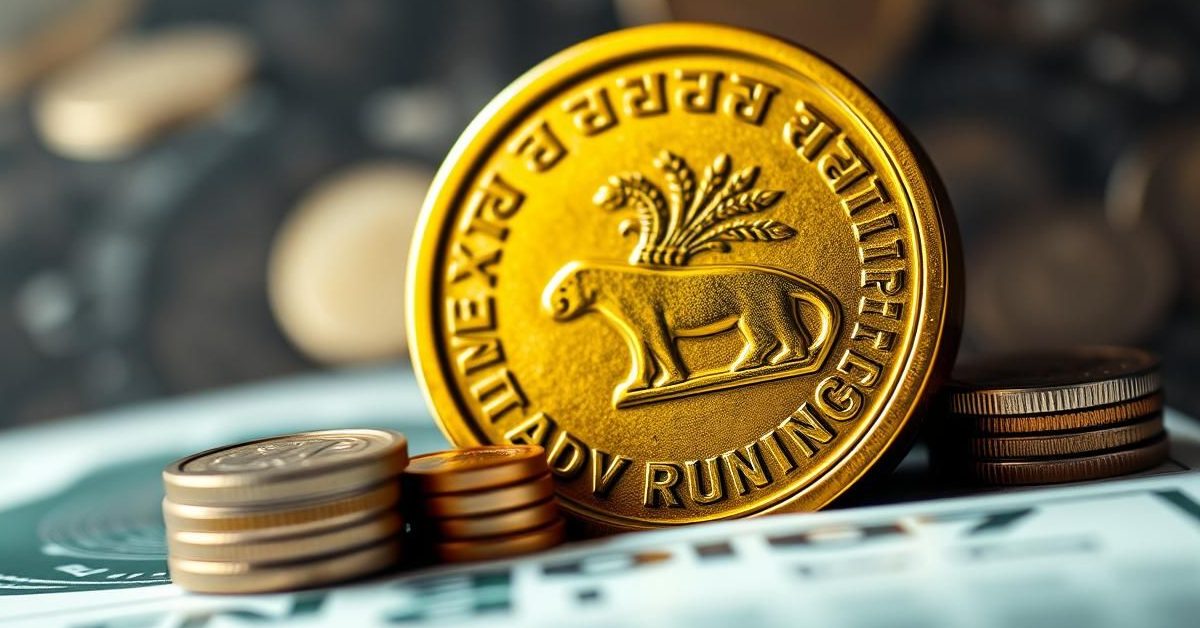Despite the Reserve Bank of India (RBI) injecting trillions of rupees and cutting interest rates, India’s banking system is struggling to boost loan growth, raising questions about the effectiveness of current policies.
RBI’s Big Push Isn’t Boosting Loans
Since December 2024, the Reserve Bank of India has been actively pumping money into the banking system. This was followed by the Monetary Policy Committee (MPC) beginning interest rate cuts in February, totaling 100 basis points.
However, these significant measures haven’t had the desired effect on loan demand. Credit growth has nearly halved since mid-2024, and economists predict a further decline in the coming months.
Data from the RBI shows that non-food credit from Indian banks grew by just 9.8% year-on-year (YoY) by the end of May. This is a noticeable drop from 11.2% in April and 16.2% a year ago, even after accounting for the HDFC Bank-HDFC Ltd merger.
The trend is similar across sectors. Loans to industry, for instance, saw a mere 4.9% YoY growth at the end of May, down from 8.9% a year prior.
Trillions Injected, But Where Did It Go?
The amount of money the RBI has injected into the system is substantial. It started by cutting banks’ Cash Reserve Ratio (CRR) by 50 basis points in December 2024.
Through various methods, including government bond purchases, the central bank added nearly Rs 10 lakh crore. This was aimed at easing a cash crunch that began in the second half of 2024 due to tax outflows and the RBI’s foreign exchange operations.
While the rupee stabilized and borrowing costs for banks fell, demand for loans continued to weaken. New bank loans were about 20 basis points cheaper in May compared to the previous year, yet uptake remained low.
Is Excess Liquidity Counterproductive?
Economists at J.P. Morgan suggest that continually adding liquidity into the banking system might not be effective beyond a certain point in lowering lending rates. Their analysis indicates that the impact on bank lending rates from liquidity changes primarily comes from movements in the interbank lending rate, known as the ‘call rate’.
Once the call rate drops to a certain level, providing more liquidity doesn’t necessarily lead to further reductions in bank lending rates. This could explain why the massive cash injection isn’t translating into stronger loan demand.
Interestingly, the RBI has also started temporary operations to drain some of this excess money. Banks themselves have been parking significantly more funds at the central bank’s Standing Deposit Facility (SDF), earning a fixed interest rate, which further indicates a lack of loan opportunities.
The Road Ahead for Credit Growth
The weakness in loan demand is a key concern for the MPC, which recently cut the policy repo rate by a larger-than-expected 50 basis points to encourage faster rate cuts by banks. However, the transmission of these policy rate cuts to actual lending rates depends on several factors.
According to Nomura economists Sonal Varma and Aurodeep Nandi, a faster and more complete transmission requires not just excess money but also a lower credit-deposit (CD) ratio. Currently, this ratio is just under 80%, while optimal transmission periods have typically seen it in the 70-74% range.
Factors like global trade uncertainty, rising imports from China, and subdued industrial capacity utilization are also dampening demand. As a result, Nomura forecasts credit growth could fall further to 7-8% by March 2026.
Demand is the Missing Piece
As RBI Governor Sanjay Malhotra pointed out, banks can only lower lending rates effectively if there is actual demand for loans. This demand is intrinsically linked to macroeconomic conditions and the overall appetite for credit in the economy.
The fact that the RBI has needed to inject so much money and cut rates significantly indicates underlying weakness, even if the annual GDP growth rate remains steady around 6.5%. The Boston Consulting Group notes that credit demand typically follows economic activity and that interest rate cuts need sustained periods—18 to 24 months—to show a meaningful impact.
- The RBI has injected nearly Rs 10 lakh crore and cut rates by 100 bps, yet loan growth has almost halved.
- Economists suggest that past a certain point, more liquidity doesn’t effectively lower lending rates further.
- Banks are parking excess funds with the RBI, indicating a lack of attractive lending opportunities.
- Weak macroeconomic conditions, including global trade uncertainty, are dampening credit demand.
- Experts predict loan growth could fall further, emphasizing that true demand is key, not just available funds.
The current scenario highlights a critical challenge for India’s economy: turning financial liquidity into tangible credit growth that fuels economic activity.














